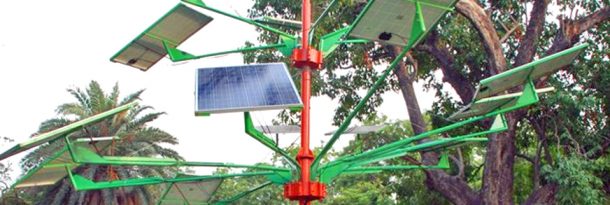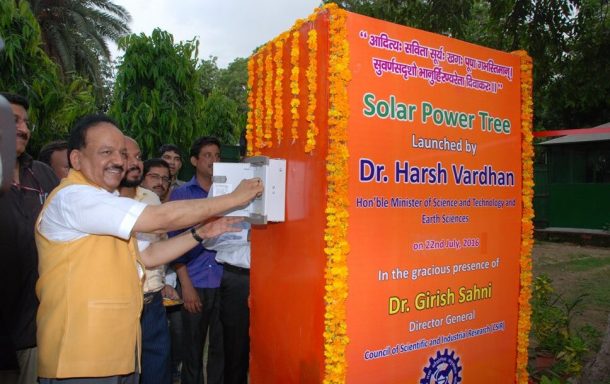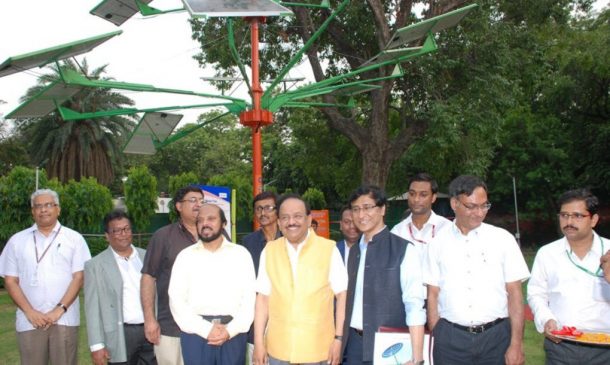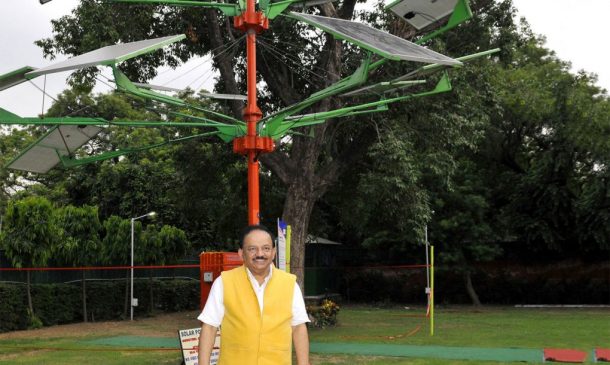The Indian scientists at the Central Mechanical Engineering Research Institute (CSIR-CMERI) have developed a Solar Power Tree that uses a vertical arrangement of arrays to produce electric energy.

The arrays in the Solar Power Tree generate the same amount of energy as any conventional array but the design allows the tree to occupy less space. The design is a useful innovation for overcrowded urban areas as well as land-scarce rural regions.

Shaped like a tree, the vertically positioned branches of the Solar Power Tree hold up the PV panels for electricity generation. A single Solar Power Tree occupies just 4 square feet of land and could generate 5kW of energy. A conventional array layout for generating 5kW requires 400 square feet area. The amount of energy generated by one Solar Power Tree is enough to power up five homes.

Solar Power Tree has the ability to harness up to 15 percent more energy as opposed to the ground-mounted photovoltaic panels. A battery is also charged by the Solar Power Tree that can power up the house two hours after the sunset.
A water sprinkler is also embedded inside the Solar Power Tree to rinse off the debris that might reduce its efficiency.

The Solar Power Tree has already been installed in three locations of West Bengal. The team now intends to include the rotating feature in the tree to enable to track the movement of the sun throughout the day. The development of the system incurred a cost of $7500.


